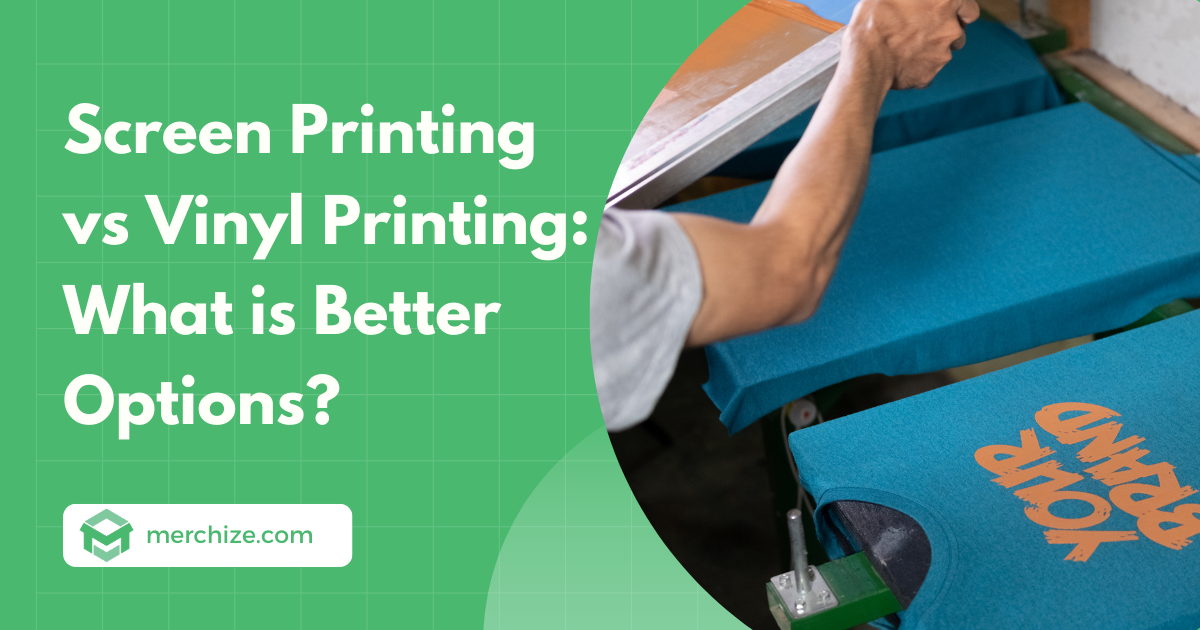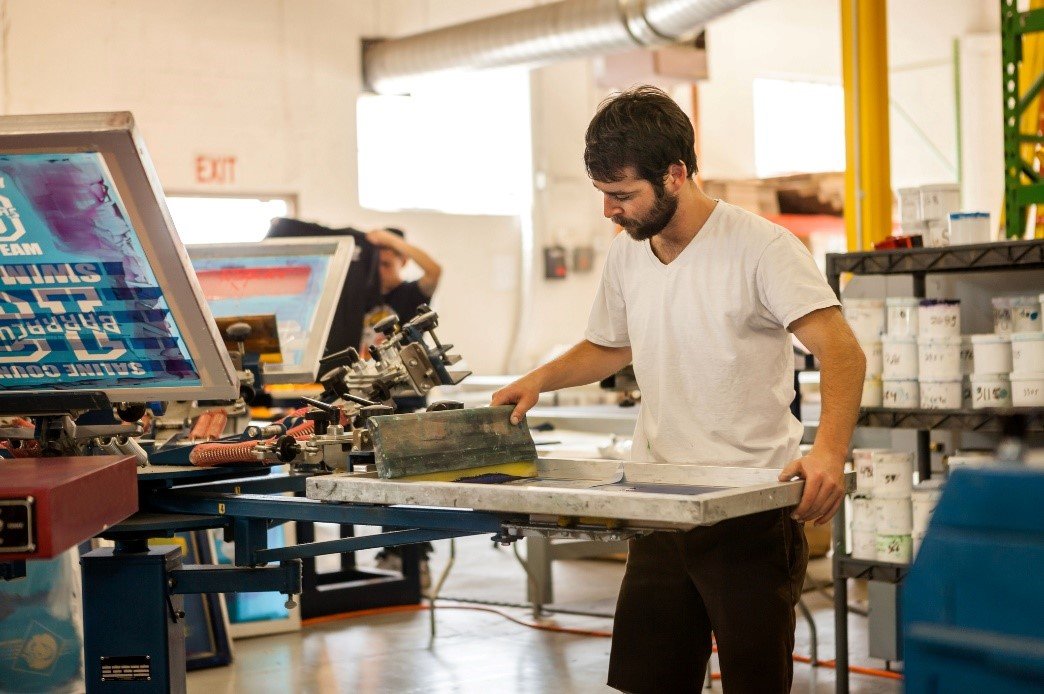Not known Factual Statements About Tx Tees
Not known Factual Statements About Tx Tees
Blog Article
Fascination About Tx Tees
Table of ContentsSome Ideas on Tx Tees You Need To KnowExamine This Report on Tx TeesA Biased View of Tx TeesLittle Known Facts About Tx Tees.Get This Report on Tx TeesThe 2-Minute Rule for Tx TeesNot known Details About Tx Tees
Include up other costs, like the number of utilities it takes to run the shop and the price of ink and emulsion per style. Take the print listed below.The emulsion must only be a couple of cents since you 'd only need to layer one display for this work. So just how much should you charge per tee shirt to make a revenue? Typically, printers try to make up to 45% revenue on a print work. Here's a table to assist you determine that: total expense per thing percent of preferred earnings as a decimal (example:.25 or.45) revenue made per product per work Now allowed's talk about the earnings of DTF.

With DTF, you can print a handful of shirts, or just one. Both display printing and DTF have their specific niches in the world.
Tx Tees - The Facts
The very best means to know? Ask about and see what print shops like yours are doing. custom cap printing. Try both out and see which you like much better
When you're selecting what sort of printing method to use for printing your art work styles on your garments, it is essential that you recognize the distinctions between these 2 strategies so you can take full advantage of outcomes while minimizing prices. Screen printing is one of the most commonly used method for publishing designs on fabrics.
DTG printing is likewise referred to as place or straight to garment printing due to the fact that it prints only what is needed as opposed to making a display as display printers do. https://worldcosplay.net/member/1743892. Screen printing works by display filler squeegee display printing ink screen mesh display, then moving the picture to garment utilizing warm and/or stress
The DTG printer makes use of special dye-sublimation inks that are applied into a pre-designed picture by an electronic printing system. The inks end up being component of the material, enabling for dynamic colors and extraordinary detail. It's additionally known as spot or direct to garment printing since it prints just what is required instead of making a screen as display printers do.
The Ultimate Guide To Tx Tees
Initially, it's much faster - you can publish a fullcolor picture in minutes, in contrast to hours for display printing. Second, there's no set up time or expenses involved - you can print any type of style you such as, without having to develop a screen. Third, there's no waste - since screen printers screen print one style at once, they have to evaluate each shade independently.
The paper is extremely costly and can just be utilized once. Once it's printed on, it has actually to be discarded. - The initial purchase cost is reduced than the ahead of time financial investment of DTG printers- You can publish multi-color layouts one screen at once rather of having to print each color separately like DTG printing.

Little Known Questions About Tx Tees.
Nevertheless, rather of utilizing display mesh as display printers do, dye sublimation printers make use of laser modern technology to transfer your photos onto garments or paper. A warm process transfers the color from its solid-state directly into the gas phase which in turn merges it onto textile substratums when they are rapidly heated up to heats under high pressure.
Sublimation printing is eco-friendly. It uses less water than screenprinting, and since it does not entail using dangerous solvents, it's risk-free for all sorts of garments. The dye sublimation inks are also odor free when healed, unlike screen printers that use dangerous chemicals throughout the screen printing process that leave behind an unpleasant odor.
They also save cash on pricey tools like direct exposure units considering that dye sublimation printers don't require a UV exposure unit or a flash cure oven that is normally made use of in display printing (t-shirt printing). What is straight to garment printing (DTG Printing)? DTG printing is an electronic screenprinting procedure that publishes directly onto material making use of specialized inkjet printers
The Best Strategy To Use For Tx Tees
DTG printing provides many advantages over standard screenprinting, including the ability to publish photo high quality images, higher color vibrancy, and the ability to publish layouts on darker textiles. DTG printers work by warming the fabric ink until it becomes a gas. The gas then penetrates the fabric, bonding with the fibers to develop a long-term print.

Screen printers simply prepare their screen then start printing till they lack product or ink.- There is a large range of seasoned screen printers all over the world, which can be valuable for newbies. - It's a slower process - screen printers often need to await the ink to dry before they can print the following color- Display printers require manual work, so there's a higher learning curve and it takes longer to generate a top quality layout- Display printing isn't as exact as DTG printing, so you might get some "bleeding" of colors from one part of the image onto another otherwise done appropriately.
The Best Strategy To Use For Tx Tees
Rather of making use of display mesh as screen printers do, color sublimation printers make use of laser innovation to move your pictures onto garments or paper. A warm process transfers the dye from its solid-state straight right into the gas phase which subsequently fuses it onto fabric substrates when they are rapidly heated up to high temperatures under high pressure.
Sublimation printing is environment-friendly. It makes use of much less water than screenprinting, and because it doesn't involve making use of hazardous solvents, it's secure for all kinds of apparel. The dye sublimation inks are likewise odor free when cured, unlike screen printers that use hazardous chemicals throughout the display printing process that leave behind an unpleasant smell.
They additionally conserve cash on costly tools like exposure units because dye sublimation printers do not require a UV exposure system or a flash remedy stove that is generally utilized in display printing. What is straight to garment printing (DTG Printing)? DTG printing is a digital screenprinting procedure that publishes straight onto textile using specialized inkjet printers.
Tx Tees Fundamentals Explained
DTG printing uses numerous benefits over typical screenprinting, including the capacity to publish photographic top quality pictures, better shade vibrancy, and the capability to publish layouts on darker textiles. DTG printers function by warming the textile ink until it develops into a gas. The gas after that penetrates the textile, bonding with the fibers to develop a long-term print.
Report this page